There can be your advertisement
300x150
How to Visually Raise Ceilings Without Renovation? Trick That Works Even in Khrushchyovka
Effective tips for visually increasing ceiling height
Low ceilings are an eternal problem in Khrushchyovka and many modern economy-class apartments. A height of 2.5 meters or even less creates the feeling that walls are pressing down from above, and the space seems cramped even with a small amount of furniture. The standard advice — to install a suspended ceiling — only worsens the issue, "eating" precious centimeters of height. Are there ways to visually raise the ceiling without major renovation and complex structures?
Main points from the article:
Vertical stripes on walls and tall narrow cabinets create an optical illusion of higher walls;
Proper placement of curtains — from the ceiling to the floor — adds up to 15-20 cm in visual height;
Proper use of color allows you to "raise" the ceiling — light top and darker bottom of walls;
Proper lighting with upward-directed light creates wonders even in the most low-ceiling rooms;
Mirror and glossy surfaces placed at a certain height create the effect of a "second floor".
The Magic of Color: Simple but Effective Method
The most accessible way to visually raise ceilings is to use colors correctly. And it's not just about painting walls — this trick works even with textiles and accessories.
The main rule is simple: the lighter the ceiling and upper part of the walls, the higher the room seems. The ideal option is a fully white ceiling without cornices or other decorative elements. But if renovation isn't in the plan, you can use another trick: create a gradient from dark to light as your gaze moves from bottom to top.
This can be done in several ways:
- Place photographs or framed pictures with dark tones at the bottom of the wall.
- Use darker furniture and choose lighter-toned upper cabinets or even abandon them altogether.
- Place textiles (curtains, cushions) in more saturated colors at the bottom of the room.
An interesting effect is created by painting or wallpapering only the bottom third of the wall in a darker color. This imitation of boiserie (wooden panels) visually "cuts" the lower part of the wall, making the eye focus on the light upper part, which seems higher.
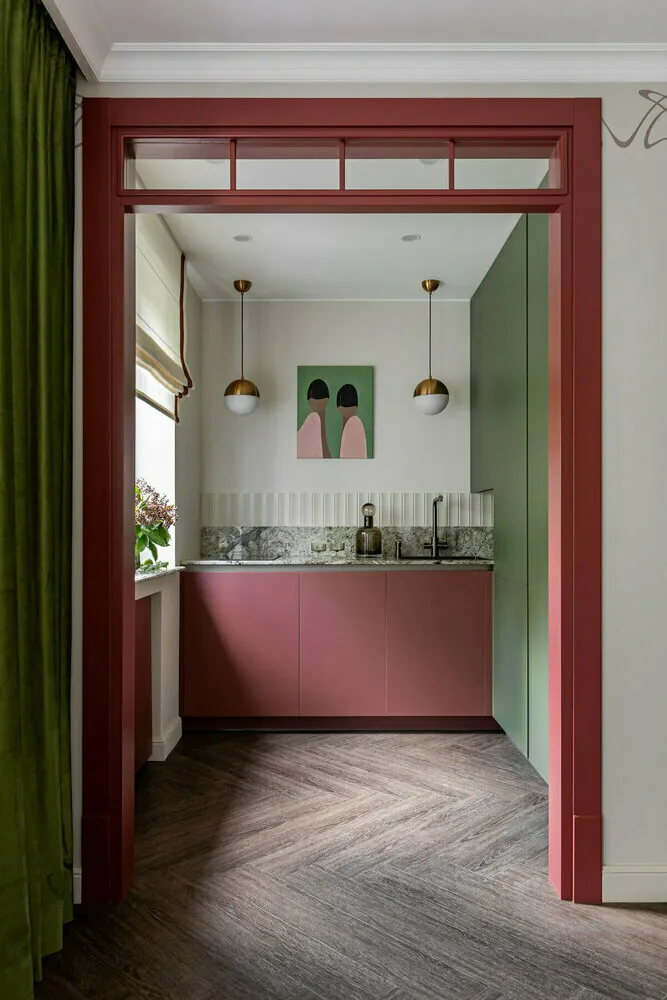
Design: Olga Shtennikova Curtains from the ceiling: trick used by designers
It's amazing how the placement of a cornice can dramatically change the perception of space. If you install the cornice directly under the ceiling (rather than above the window, as many are accustomed to), and choose curtains all the way down to the floor, it creates the impression of higher walls.
This effect is enhanced if you choose curtains with a vertical pattern or vertical pleats. The eye automatically follows these lines from bottom to top, creating the feeling of greater height.
Important: curtains should start right from the ceiling, without gaps, and end precisely at the floor — not higher and not with too much hem. Ideally, they should just barely touch the floor.
For small rooms with low ceilings, it's better to forgo heavy draperies in favor of light fabrics that won't visually "weight" the space. If the budget allows, choose fabrics with a subtle sheen — they reflect light and make the room feel more airy.
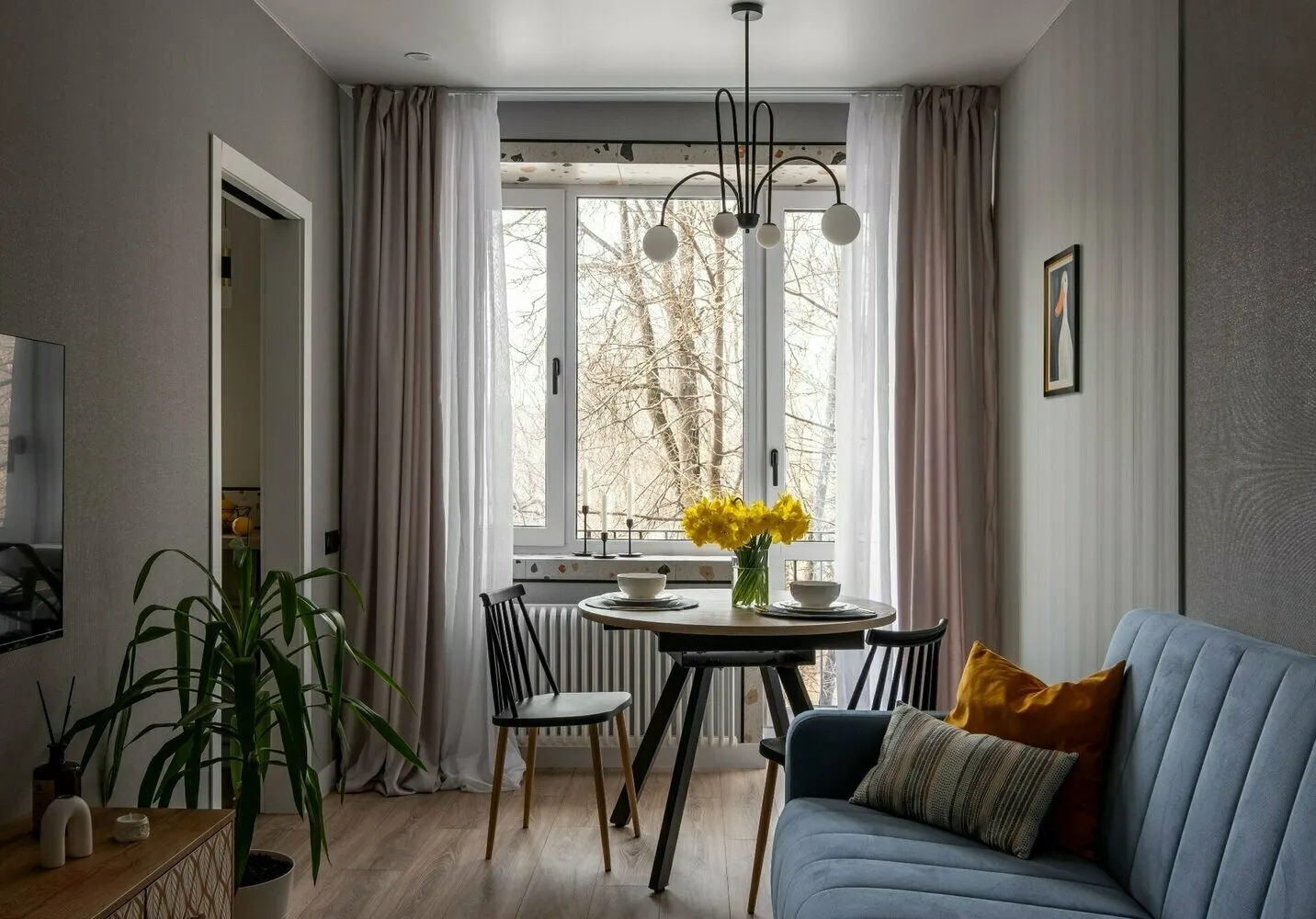
Design: Galina Ovchinnikova Vertical Lines: Visual Trick That Works
The human eye is designed to follow lines. Vertical lines make the gaze move upward, creating a feeling of greater height. This principle can be used in various elements of interior design:
Wallpaper or painting with vertical stripes;
Tall narrow cabinets or shelves up to the ceiling;
Vertical blinds or slats on walls;
Tall room plants directing the gaze upward.
Even if you don't plan to re-wallpaper, you can add vertical accents: a tall floor lamp, a tall vase with dried flowers, or a thin shelf up to the ceiling. Any element that makes the gaze glide upward creates the desired effect.
Open shelves up to the ceiling, arranged along one wall, are especially effective. They not only visually stretch the space but also solve storage problems without bulky cabinets that consume room volume.
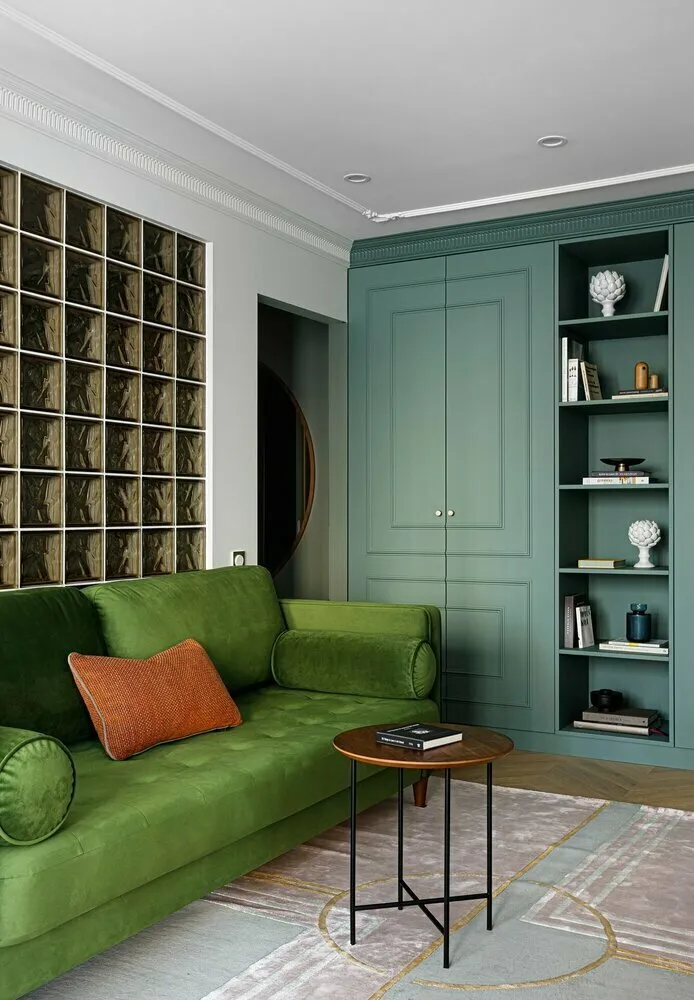
Design: Anastasia Gurova, Mariya Gulbekyan Light Play: Lighting That Expands Space
Proper lighting can radically change the perception of ceiling height. The main principle is to direct light upward, illuminating the ceiling and upper parts of walls.
Here are a few simple tricks:
- Use floor lamps with upward-directed light;
- Place LED strips around the perimeter of the ceiling;
- Choose wall sconces that cast light upward and downward;
- Do away with heavy chandeliers in favor of compact ceiling lights.
One of the most effective solutions is wall sconces with upward-directed light. They create soft light spots on the ceiling, visually pushing it upward and making the room appear taller.
If you have the opportunity to replace the central light fixture, choose models that mount flush with the ceiling, without suspensions. The ideal option is recessed lighting, but its installation usually requires renovation. A compromise solution is flat surface-mounted lights with diffused light.

Design: Svetlana, blogger Mirror and Glossy Surfaces: The Effect of Infinity
Mirrors and glossy surfaces are powerful tools for visually enlarging space. They reflect light and create the illusion of a continuation of the room.
To visually increase ceiling height, you can use:
- A tall vertical mirror reaching almost to the ceiling;
- Glossy furniture, especially upper cabinet fronts on kitchen cabinets;
- Accessories made of glass or metal with reflective properties;
- Glossy ceiling (if you decide to do a small renovation).
It is especially effective to place mirrors or glossy surfaces opposite windows — they reflect natural light and visually expand the space. You can even install mirror panels in the upper third of the walls around the room — this trick creates the impression that the ceiling is higher.
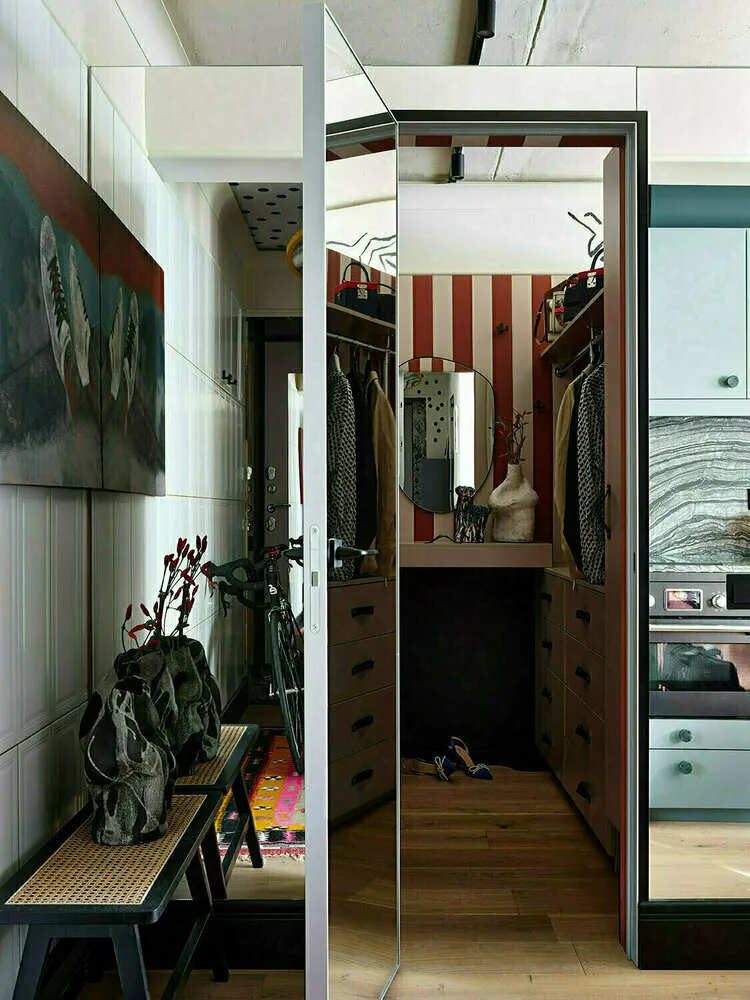
Design: Tatiana Makarova Furniture and Arrangement: What Increases, What "Eats" Height
The choice and arrangement of furniture play a critical role in the perception of ceiling height. The main rule: the lower the furniture, the higher the ceiling seems.
Here are some recommendations:
Choose low sofas and armchairs on legs;
Do away with bulky cabinets in favor of compact dressers and open shelves;
Use transformable furniture that can be folded away when not in use;
Place large items against the walls, freeing the center of the room.
One of the main enemies of visual height is lofts and upper suspended cabinets. If possible, get rid of them. Instead, it's better to use the entire wall height for a unified tall cabinet or shelf in one area of the room.
Another important point is choosing beds and sofas without high backs. In a bedroom, it's better to abandon the heavy headboard or replace it with decorative panels on the wall that visually extend upward.
Unconventional Solutions: When You Need a Wow Effect
If standard techniques seem too predictable, you can use unconventional solutions:
Photo wallpapers with perspective going upward (arcs, columns, trees);
Suspended ceiling with sky or geometric pattern print;
Creating an accent "zone" with a visually high ceiling in one part of the room;
Decorative panels with 3D effect on one wall.
An interesting effect is created by wallpaper or painting with a pattern that narrows toward the top. This can be an image of a forest, city landscape, or just a geometric pattern with decreasing elements. This technique creates a sense of perspective and visually "pulls" the walls upward.
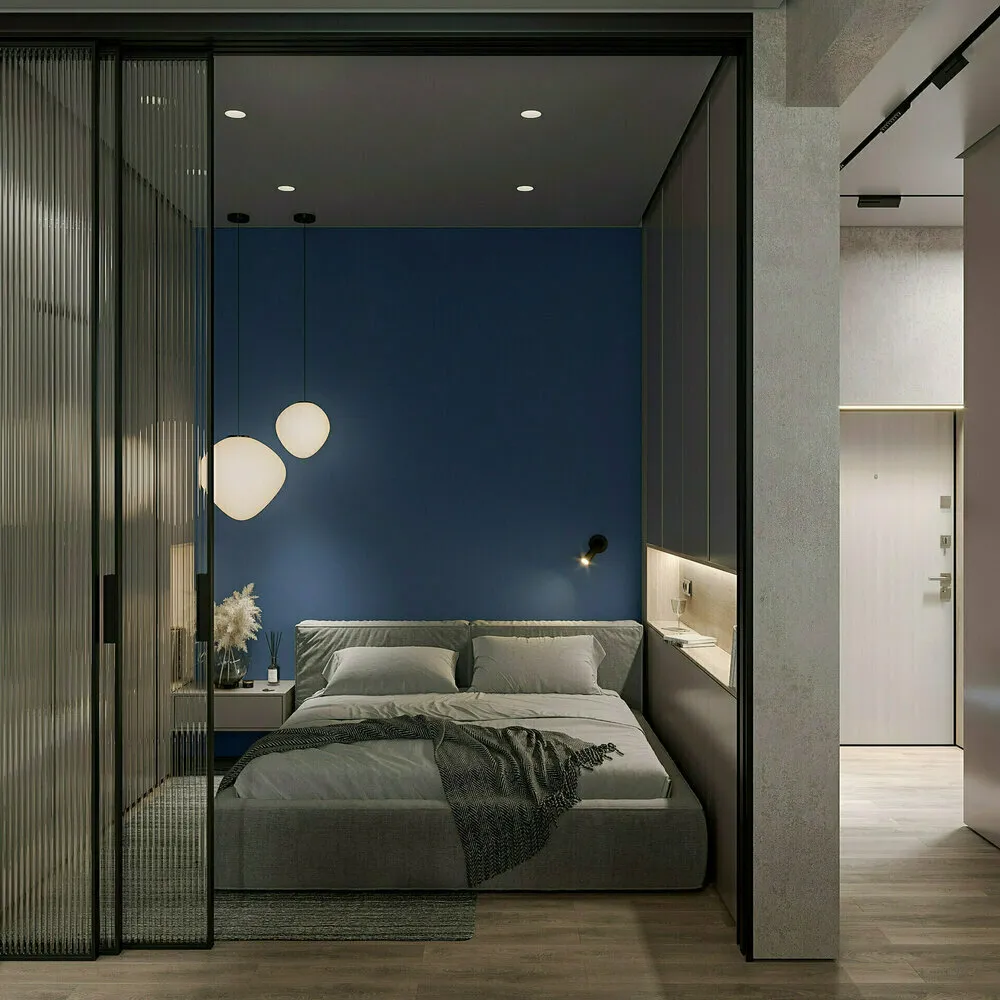
Design: Marina GRI What Works in Khrushchyovka: Proven Solutions
Khrushchyovka with 2.5-meter ceilings require a special approach. Here's what actually works in such apartments:
Light-colored walls and ceiling without contrast boundaries between them;
Minimal hanging furniture, maximum wall-mounted vertical cabinets up to the ceiling;
Spot lighting instead of a central chandelier;
Mirrors placed vertically, especially opposite windows;
Curtains from ceiling to floor with vertical pattern or structure.
In Khrushchyovka, it's especially important to avoid dark colors on the ceiling and upper part of the walls. Even if you want to add color, it's better to do it in the bottom third of the room, keeping the top as light as possible.
An interesting solution for Khrushchyovka is using one color for the walls and ceiling, without a clear boundary between them. This blurs the transition line and makes it impossible to clearly determine where the wall ends and the ceiling begins, which visually increases height.
Low ceilings are not a death sentence for stylish and spacious interiors. With proper colors, lighting, textiles, and furniture arrangement, you can create an illusion of a higher space even in a typical Khrushchyovka. And for this, it's not necessary to start a major renovation — many techniques can be implemented by simply rearranging furniture or adding a few new elements.
The main thing to remember is that the psychological perception of space doesn't always match its physical dimensions. A cozy and well-organized room with low ceilings can seem more comfortable than a spacious room with high ceilings but poor design.
Cover: Design project by Galina Ovchinnikova
More articles:
 How to Furnish a 20 m² Space to Fit Everything: 6 Real Examples of Micro Apartments
How to Furnish a 20 m² Space to Fit Everything: 6 Real Examples of Micro Apartments Top 10 Apartments Under 30 m² with Thoughtful Design
Top 10 Apartments Under 30 m² with Thoughtful Design «In the end, we had to redo it twice»: main mistakes in kitchen planning
«In the end, we had to redo it twice»: main mistakes in kitchen planning Vibrant and Rich Interior in a 91 sqm Apartment
Vibrant and Rich Interior in a 91 sqm Apartment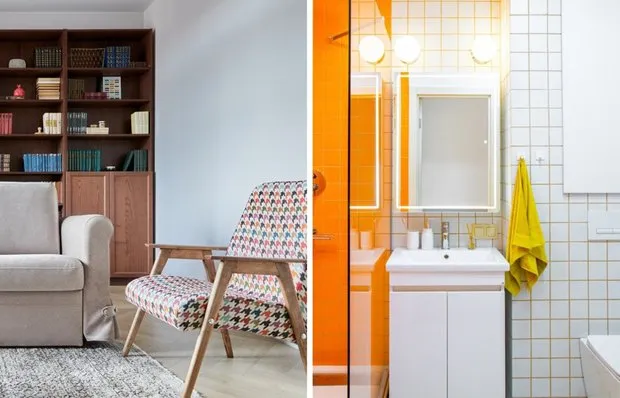 7 Soviet Interior Solutions That Are Trending Now
7 Soviet Interior Solutions That Are Trending Now Five Places in an Apartment Where Clutter Constantly Accumulates: How to Organize Storage Once and for All
Five Places in an Apartment Where Clutter Constantly Accumulates: How to Organize Storage Once and for All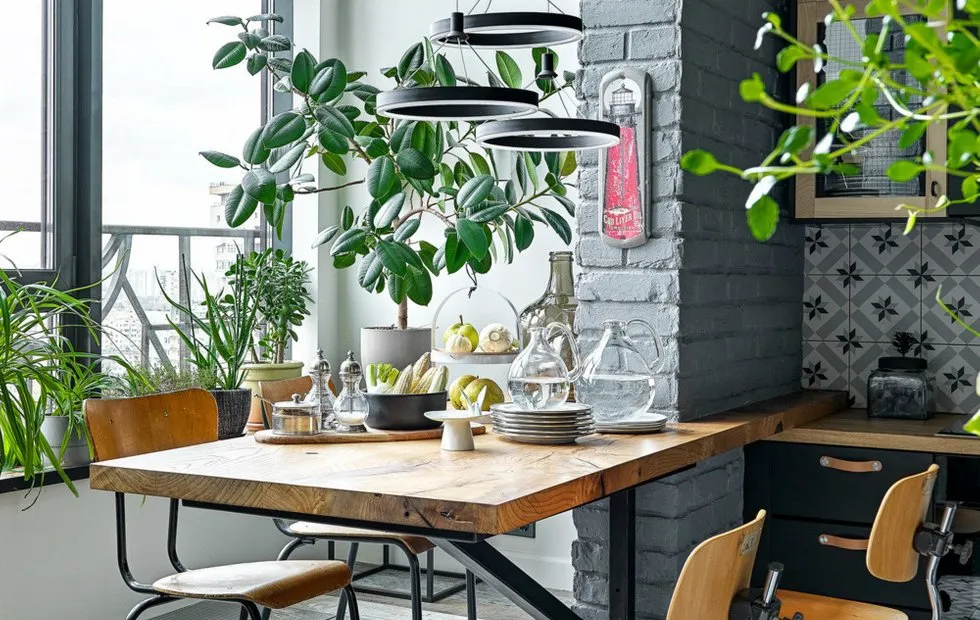 Plants at Home: How a Green Corner Can Change Your Life
Plants at Home: How a Green Corner Can Change Your Life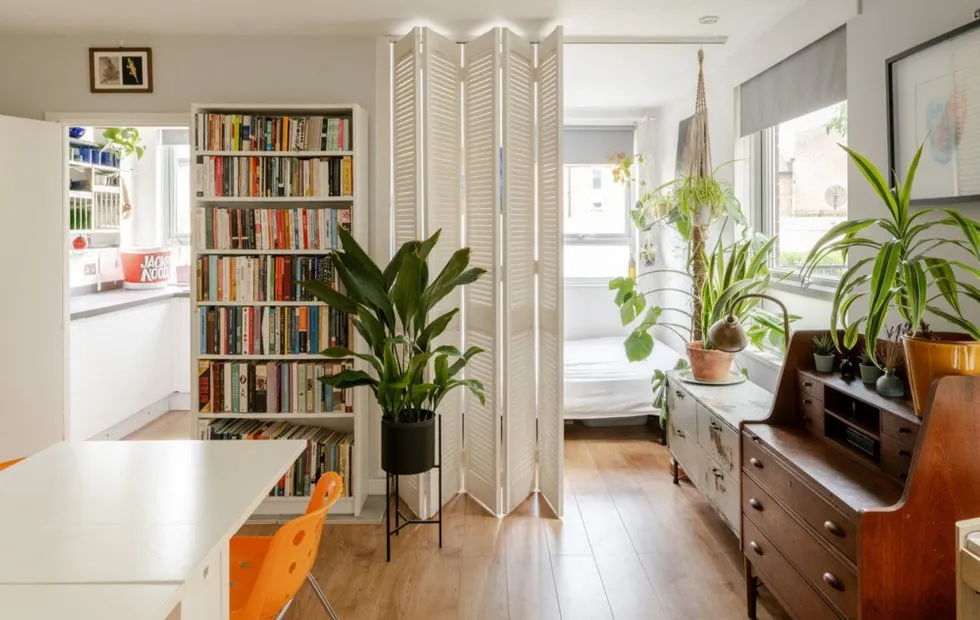 Blinds Are More Than Just for Windows: How to Bring Life to Interiors with Slats and Blind Structures
Blinds Are More Than Just for Windows: How to Bring Life to Interiors with Slats and Blind Structures